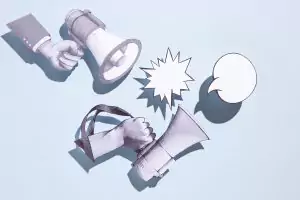
✅ AI Essay Writer ✅ AI Detector ✅ Plagchecker ✅ Paraphraser
✅ Summarizer ✅ Citation Generator

As a writer, you might have faced the situation when you want to describe a sensation, but do not have the words to do it. Usually, we describe visual impressions in categories of visual perception (color, shape, size), and auditory experience—in categories of auditory perception (tone, volume, pitch), and so on. And sometimes, the standard means of description fail to convey what we feel like. At this point, you got three options: getting stuck in writer’s block, self-criticism for not being able to express what you want to say, or using the emergency exit when at a dead-end. This emergency exit is called synesthesia.
Synesthesia means the blending of senses; the intriguing part is that it is different categories of senses that become blended together. A person with synesthesia can feel the shape of a taste; for example, they may feel sweetness as something round. Or such a person can see sounds—by the way, the famous composer Alexander Scriabin could see the color of musical notes. These are not the only possible combinations though; synesthetes can see the world much differently from regular people. And, unlike LSD or other drugs, synesthetic sensations last for a lifetime.
Life is extremely complicated, and the amount of shades of sensations we receive every day is tremendous; it is simply not possible to convey them using only simple methods such as comparison or metaphors. And this is where you need synesthesia.
Here is an exercise for you: write a 500-word descriptive short story using synesthesia. If you think you can’t do it because you’ve “never had anything like synesthesia in my head, it’s craziness and blah-blah,” relax—a regular mind produces tons of craziness every day, and the blending of senses is something worthwhile. Besides, it is not so difficult as you might think. Imagination is a real power, and even if you don’t feel like letter A is green, or the word “wood” is salty and soft, you can make these sensations up. Relax, imagine what you want to describe, and try to fit different qualities into it. For example, think of a sweet taste. Now ask yourself if the sweet taste could be, say, a round shape, or of a cream-white color. Could it be light or heavy? Could it sound like something? Pay close attention to the associations that come to your head—they are often synesthetic.
Write at least one essay or short stories per week using this technique, and you will soon learn to combine sensations. In real writing, however, you will not have to write whole paragraphs full of synesthesia—usually, it is enough to add a small touch, one short phrase describing a mixed sensation. If overused, synesthesia in writing will look artificial and intrusive; but if you add it here and there, as a suppository, it will make your writing vivid and lively.
Stay updated!
Follow us on Reddit for more insights and updates.




Comments (0)
Welcome to A*Help comments!
We’re all about debate and discussion at A*Help.
We value the diverse opinions of users, so you may find points of view that you don’t agree with. And that’s cool. However, there are certain things we’re not OK with: attempts to manipulate our data in any way, for example, or the posting of discriminative, offensive, hateful, or disparaging material.